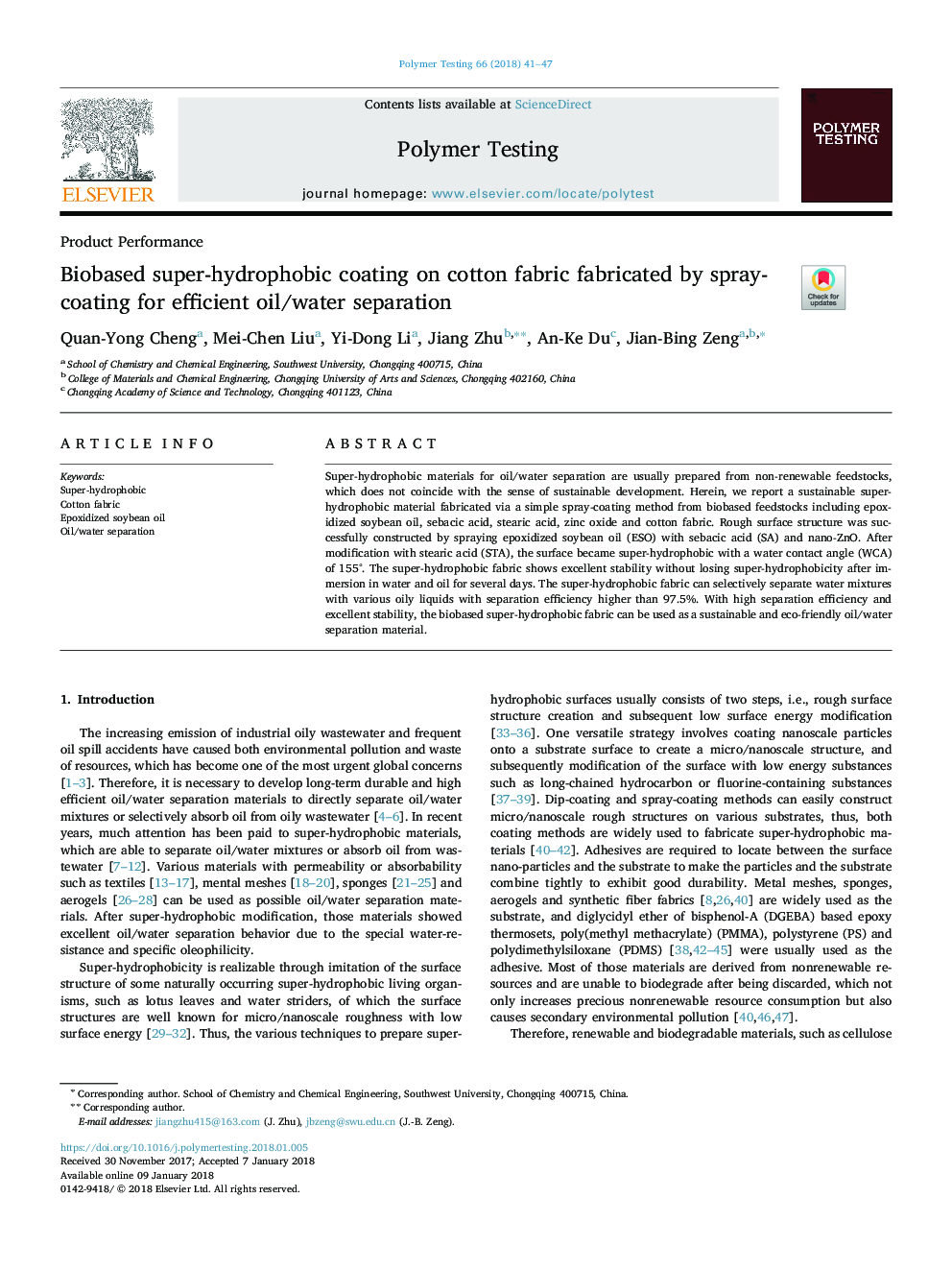| Article ID | Journal | Published Year | Pages | File Type |
|---|---|---|---|---|
| 7825150 | Polymer Testing | 2018 | 7 Pages |
Abstract
Super-hydrophobic materials for oil/water separation are usually prepared from non-renewable feedstocks, which does not coincide with the sense of sustainable development. Herein, we report a sustainable super-hydrophobic material fabricated via a simple spray-coating method from biobased feedstocks including epoxidized soybean oil, sebacic acid, stearic acid, zinc oxide and cotton fabric. Rough surface structure was successfully constructed by spraying epoxidized soybean oil (ESO) with sebacic acid (SA) and nano-ZnO. After modification with stearic acid (STA), the surface became super-hydrophobic with a water contact angle (WCA) of 155°. The super-hydrophobic fabric shows excellent stability without losing super-hydrophobicity after immersion in water and oil for several days. The super-hydrophobic fabric can selectively separate water mixtures with various oily liquids with separation efficiency higher than 97.5%. With high separation efficiency and excellent stability, the biobased super-hydrophobic fabric can be used as a sustainable and eco-friendly oil/water separation material.
Related Topics
Physical Sciences and Engineering
Chemistry
Organic Chemistry
Authors
Quan-Yong Cheng, Mei-Chen Liu, Yi-Dong Li, Jiang Zhu, An-Ke Du, Jian-Bing Zeng,
